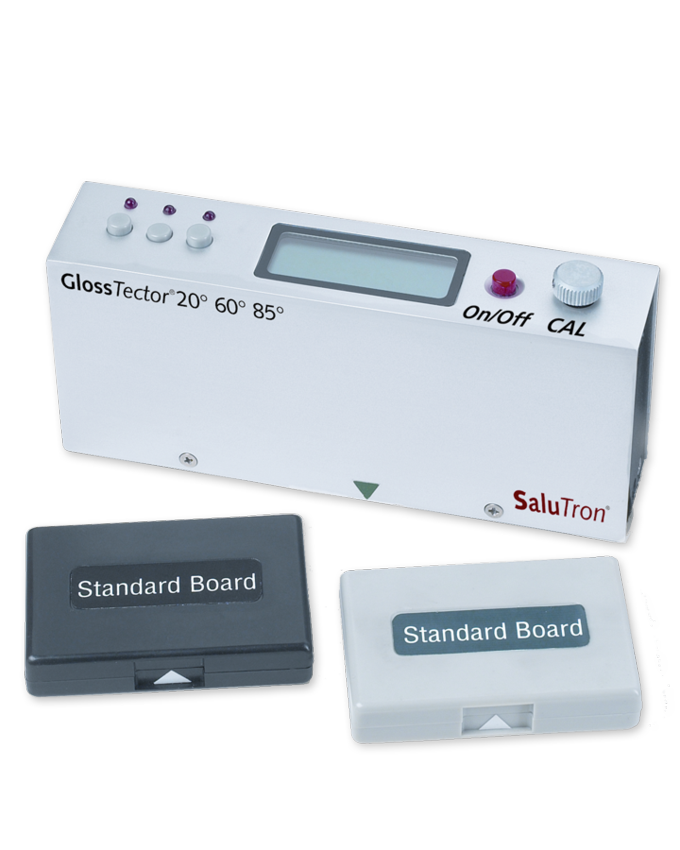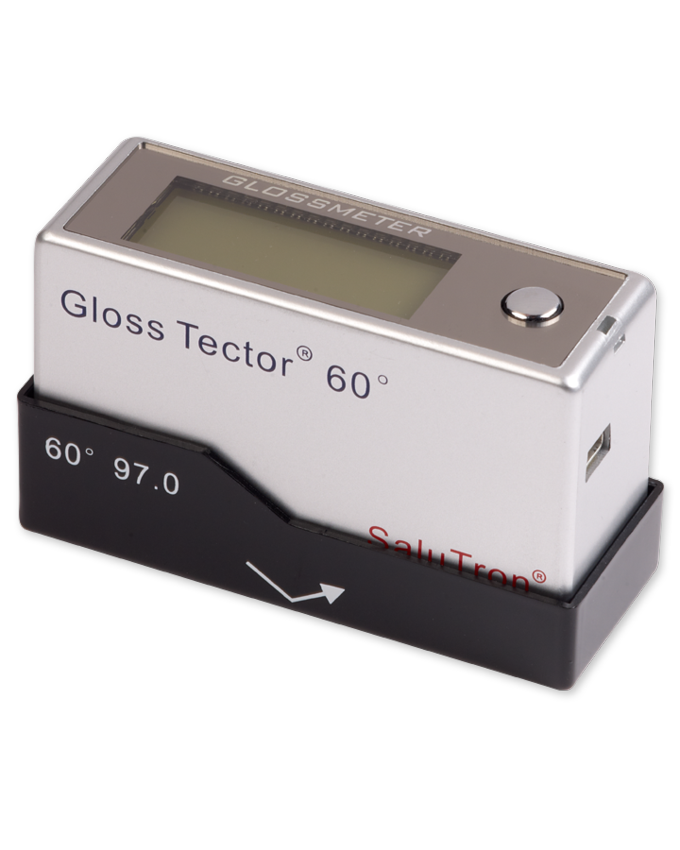Operation
Definition of gloss: optical property of a surface with the ability to reflect light.
When a light beam streams at a defined angle of incidence at a paint layer, the largest portion of the beam penetrates the surface, and a certain portion is reflected. As a result, gloss measurements are not given in percentages, but in gloss units (GU) ranging from 0-100.
The so-called reflectometer value refers to a polished black glass standard and not to the light amount.
This standard has a defined refractive index of 1.567 and is set equal to 100 gloss units (GU).
Mirrors, polished metal and certain foils have a much higher refractive index compared to coatings or black glass standard. These products generate immensely higher gloss values, which can go up to 2.000 GU.
Standards: DIN 67530, EN ISO 2813, ASTM D 523, ISO 7668
Gloss measuring gauges


Gloss measuring instrument GlossTector© 60° Mini
- One of the smallest and most practical gloss measurement instruments ever
